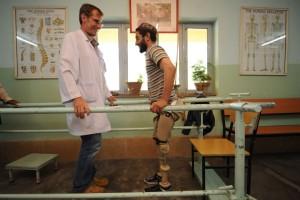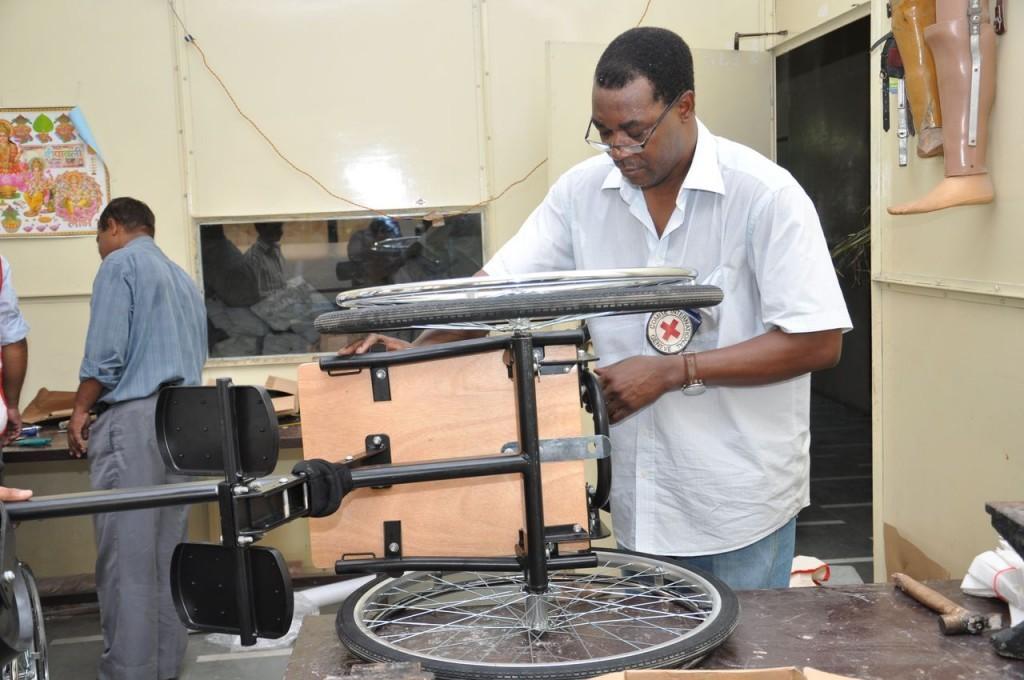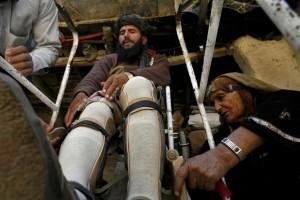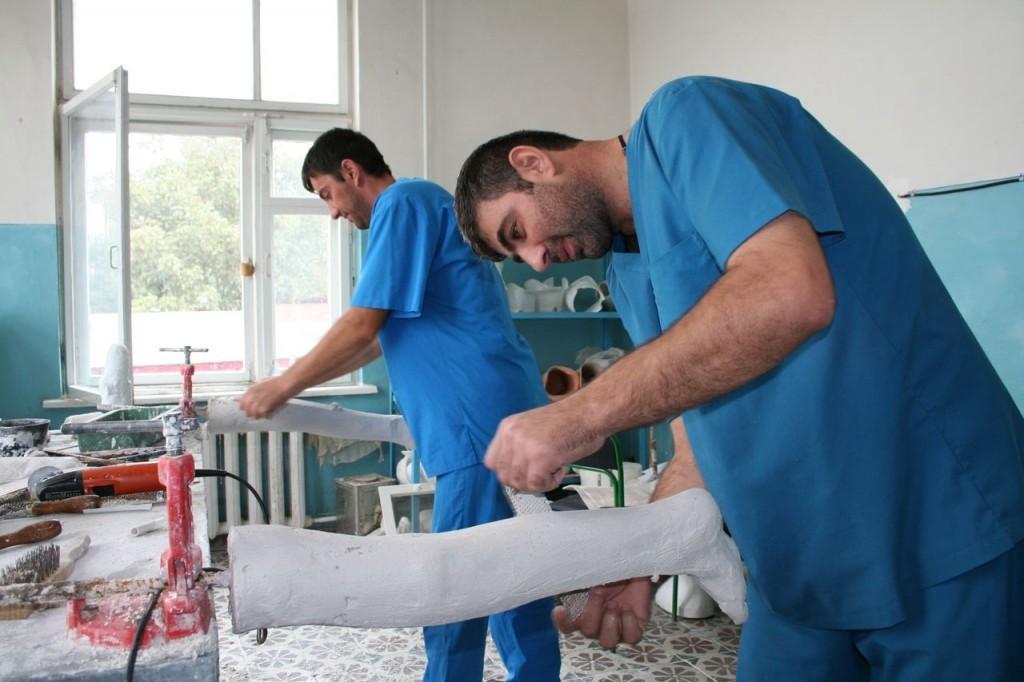ICRC Enable Makeathon Endeavors to Help People With Disabilities in Remote Areas Through 3D Printing and Other Technologies
 One of the best things about 3D printing, in my opinion, is the amazing difference it has made in the lives of people with disabilities. Prosthetics and assistive devices are cheaper, more accessible, and more advanced than ever before, and the field continues to move forward at a rapid pace. Unfortunately, new technology isn’t reaching some of the people who need it the most. People living with disabilities in poor, rural areas around the world are often still unable to live autonomously, simply because of their lack of access to devices that would enable them to do so.
One of the best things about 3D printing, in my opinion, is the amazing difference it has made in the lives of people with disabilities. Prosthetics and assistive devices are cheaper, more accessible, and more advanced than ever before, and the field continues to move forward at a rapid pace. Unfortunately, new technology isn’t reaching some of the people who need it the most. People living with disabilities in poor, rural areas around the world are often still unable to live autonomously, simply because of their lack of access to devices that would enable them to do so.
The International Committee of the Red Cross (ICRC) is sponsoring the Enable Makeathon, a 60-day challenge intended to generate solutions to the problems faced by disabled people living in the third world. The challenge invites “engineers, designers, the scientific and innovation community, persons with disabilities, humanitarians, manufacturers, investors and entrepreneurs” to come together and combine their expertise to ease the lives of those who currently have no access to desperately needed technology.
 The Makeathon is actually composed of two programs: an onsite program that will take place in Bangalore, India, and a global online program that will run concurrently. Beginning on November 21st, the program is centered around the “Nine Enable Challenges”: performing activities of daily living; mobility in and around the house; mobility within and beyond the community; accessing education and training; employability and self-employment; remote access to physical rehabilitation services; remote follow-up and users-to-service provider interactions; data collection to improve the quality of services; and adaptation and use of new technologies. Each challenge asks a series of questions, from “How can persons with disabilities lift, hold and manipulate objects of daily living?” to “How can existing technologies be adapted and redesigned to match the needs of users in rural areas with limited financial
The Makeathon is actually composed of two programs: an onsite program that will take place in Bangalore, India, and a global online program that will run concurrently. Beginning on November 21st, the program is centered around the “Nine Enable Challenges”: performing activities of daily living; mobility in and around the house; mobility within and beyond the community; accessing education and training; employability and self-employment; remote access to physical rehabilitation services; remote follow-up and users-to-service provider interactions; data collection to improve the quality of services; and adaptation and use of new technologies. Each challenge asks a series of questions, from “How can persons with disabilities lift, hold and manipulate objects of daily living?” to “How can existing technologies be adapted and redesigned to match the needs of users in rural areas with limited financial  means?” Participants are given 60 days to design tangible solutions to one or more of these challenges.
means?” Participants are given 60 days to design tangible solutions to one or more of these challenges.
“Typical hackathons usually run for about, you know, two days,” said Nihal Kashinath of Internet of Things, Bangalore, a partner for Enable Makeathon. “It’ll be a Saturday and Sunday, and people work toward making that proof of concept in those two days. But with Enable Makeathon, it was not just about creating a proof of concept, but actually designing a product for manufacturing.”
Participants in the onsite program in Bangalore will work with local organizations such as the Association for People with Disabilities, the Indian Institute of Management Bangalore, Workbench Projects, and IKP-Eden. They will meet with disabled people in the community to better understand the challenges they face, and utilize the city’s emerging makerspaces to work on products to meet those challenges. Experts and mentors will be on hand to guide the participating teams and to solve issues, and regular workshops and clinics will be part of the process. The project will culminate in a “Demo Day” on January 23rd, at which prototypes will be presented to the media and potential investors, incubators and NGOs. The online program allows remote participants to follow the same course through webinars and video presentations.
Enable Makeathon is accepting applications until October 31st, at which point 12-15 teams will be chosen for both the online and onsite programs. Teams will be judged periodically throughout the process, with the most promising being selected to proceed to later stages of the program. Prizes of $25,000, $15,000 and $10,000 will be awarded for the three best solutions as judged at the final Demo Day. The ICRC hopes to develop and market as many innovations from the program as possible, and is looking for support from investors. If you or your company would like to invest in the endeavor, you can contact the ICRC here.
Let us know if you will be participating. Discuss in the ICRC forum thread on 3DPB.com.
Subscribe to Our Email Newsletter
Stay up-to-date on all the latest news from the 3D printing industry and receive information and offers from third party vendors.
You May Also Like
Profiling a Construction 3D Printing Pioneer: US Army Corps of Engineers’ Megan Kreiger
The world of construction 3D printing is still so new that the true experts can probably be counted on two hands. Among them is Megan Kreiger, Portfolio Manager of Additive...
US Army Corps of Engineers Taps Lincoln Electric & Eaton for Largest 3D Printed US Civil Works Part
The Soo Locks sit on the US-Canadian border, enabling maritime travel between Lake Superior and Lake Huron, from which ships can reach the rest of the Great Lakes. Crafts carrying...
Construction 3D Printing CEO Reflects on Being Female in Construction
Natalie Wadley, CEO of ChangeMaker3D, could hear the words of her daughter sitting next to her resounding in her head. “Mum, MUM, you’ve won!” Wadley had just won the prestigious...
1Print to Commercialize 3D Printed Coastal Resilience Solutions
1Print, a company that specializes in deploying additive construction (AC) for infrastructure projects, has entered an agreement with the University of Miami (UM) to accelerate commercialization of the SEAHIVE shoreline...





























